
🤓 Fact: Amazon’s algorithm gives weight to sales velocity, improving organic placement in search results.
🤔 Opinion: Striving for top organic product listings on Amazon requires an investment in Amazon advertising.
✅ Proof: With the help of the smart folk in the eCommerceFuel (ECF) forum, let’s discuss the pros and cons.
Here’s a quick snapshot of what we’ll cover:
Table of contents
Pro: Amazon PPC campaigns enhance product visibility
Getting your product noticed is the first hurdle, and Amazon Sponsored ads help overcome this by highlighting your product directly to an active buying audience.
“Amazon is the Google of products. What do I need to buy, and if I have an Amazon account, I pick, I check out and never think about it again. As a shopper, it could not be better.” —ECF Member
Leverage peak season sales
Ads perform best in peak season like holidays and Prime Day, when visibility competition and conversion rates soar. Capitalize on these periods by increasing ad spend.
Amazon Prime Day (APD) was a huge success for this brand.
“On day 1 (of APD), we experienced a 278% increase in sales while still remaining profitable.” —ECF Member
And maybe, you don’t need to join in on the discounts.
“We had similar results, about 300% increase on Day 1 and ~200% on Day 2. We did zero discounts, though.” — ECF Member
Each sale whether from Amazon sponsored product ads or organic sales increases the chances of products getting reviews and improves your product’s organic ranking in search results.
This is part of the secret sauce of Amazon SEO.
“When we run PPC ads on Amazon, we are mainly looking to use the PPC as a method of increasing our organic search ranking in Amazon.” — ECF Member
One ECF member generated $8,197 in sales from $459 ad spend—a 1,685% increase.
Projecting these results annually, he anticipates a return of $49,182 from a $2,754 investment in Amazon advertising.
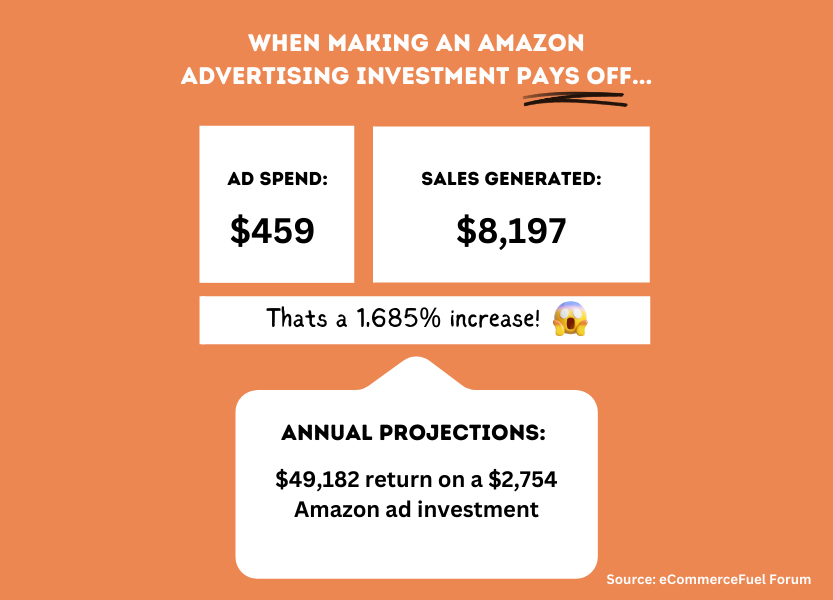
“My reason for posting our recent success was to encourage other ECF members to try it if they’ve never run ads on Amazon Sponsored Products before. It’s the best PPC $ we’ve spent.” —ECF Member
His strategy? Using MerchantWords for keyword search, focusing on “exact match type” keywords with 1,000 or more searches, and regularly reviewing top-performing keywords.
“The takeaway for me moving forward is to do both auto and manual targeting campaigns. Otherwise, we’re leaving money on the table and perhaps some organic ranking.” —ECF Member
Experiment with different advertising programs
Don’t be one of those people leaving money on the table by only using Sponsored Product Ads.
Amazon has several campaign types to choose from.
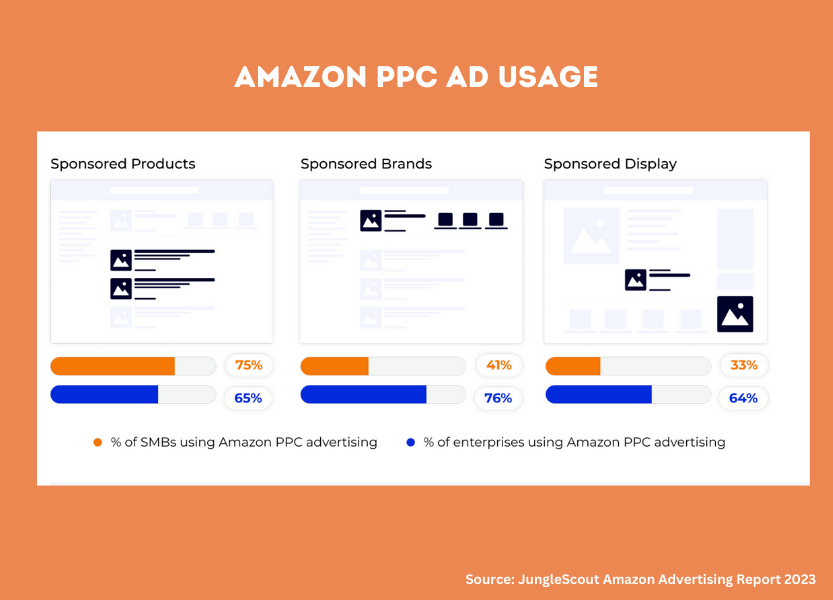
Joshua Rawe, an Amazon expert on the ECF forum and the Co-Founder of eSpark, is surprised at the number of Amazon advertising accounts he’s reviewed that rely solely on Sponsored Product ad campaigns.
In his opinion, these accounts overlook the potential of Sponsored Brand and Sponsored Display ads, which offer a greater range of placements and targeting options.
Pro: Outperform competitors who are capitalizing on your potential sales
Your competitors may already be bidding on keywords specifically searched by your potential customers. This means your strategic presence with Amazon ads can help you capture those sales that otherwise could go to your competitors.
“Someone, today, is bidding on your own keywords, for people who are specifically searching for your products and getting more sales than you would have had if you had been using Amazon advertising.” —ECF Member
Using the right target keywords
In maximizing the effectiveness of your ad campaigns, the right keyword targeting and the use of negative keywords play a big role.
Negative keywords boost the performance of your ads by improving your click-through-rate (CTR). They make sure your ads are displayed only in response to relevant searches, reducing exposure to non-targeted or irrelevant impressions.
This strategy focuses on attracting more interested viewers, minimizes wasted clicks, and increases the likelihood of high-quality, relevant users clicking on your ads.
By eliminating specific terms and phrases, you gain better insight into the search results that work well for your ads.
Yet, behind the narrative of sales growth and increased organic visibility lies a key truth… this success rarely comes without the complexities and obstacles inherent to Amazon advertising.
Let’s shed some light on the cons associated with Amazon advertising that may influence your decision.
Con: Managing PPC advertising on Amazon can be time-consuming and costly
Managing Amazon Sponsored Ads is a multifaceted task involving balancing the resources at your disposal, the expertise required, and the time it demands. Considering the complexities, the best approach for your business might look different to another.
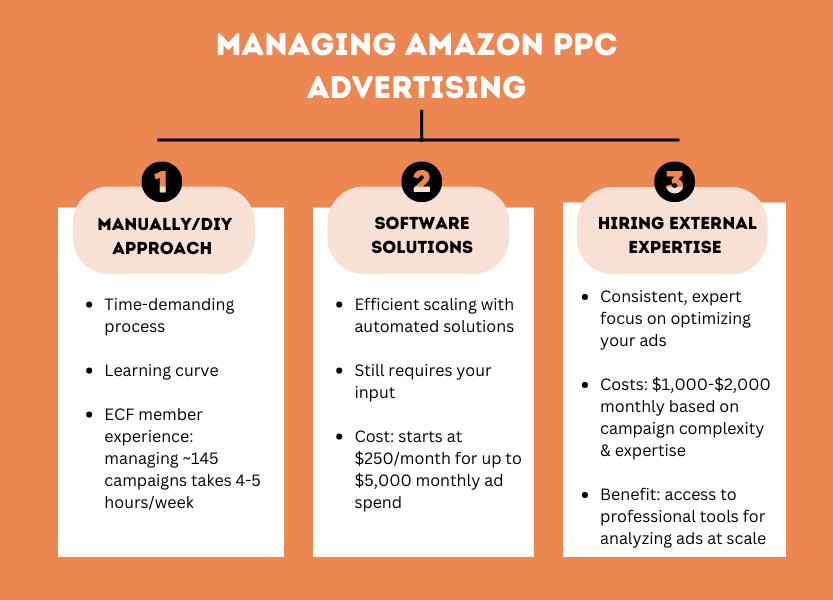
Navigating PPC Advertising Manually
Managing PPC ads manually can be incredibly time-consuming, potentially diverting attention from other important areas of your business.
“I have about 145 campaigns at any given time and it takes me about 4-5 hours a week to manage them (I make changes to PPC every Thursday morning and record those changes).” — ECF Member
Using Automated Software Solutions
For businesses with numerous products, managing PPC campaigns manually may be inefficient. Automated software solutions allow businesses to scale their PPC advertising efforts while freeing up valuable time.
“With any software you will have to be in control of at least 1 thing, which is inputting the desired outcome. If you want hands-off at all costs then you need someone running it for you.” —ECF member
Recommendation: Perpetua is pretty close to hands-off, but you need to watch a few things if you want to keep spending in check, at least within the first 30 days.
While automation can streamline the process, the costs associated with these software solutions should be carefully considered to ensure they align with your overall budget. Perpetua starts at $250/month for up to $5,000 monthly ad spend.
Hiring External Expertise for Optimizing PPC
Engaging an agency or a consultant to manage your PPC campaigns comes with its own costs, and it doesn’t hurt to understand the pros and cons of outsourcing vs in-house. These professionals charge for their expertise and time spent on your campaigns.
Prices vary greatly based on the size and complexity of the campaigns and the agency’s or individual’s reputation and experience, but you can be looking at the $1,000-$2,000/month price range.
Again, this can be worth it, depending on your situation and goals.
“I like knowing we have someone who is constantly working to get the most out of the spend. They also have tools they use to analyze ads at scale.” —ECF Member
Don’t expect success overnight.
In episode 305 of eCommerceFuel’s podcast, Greg Mercer founder and CEO of Jungle Scout said to expect it to take one-two months to get enough traffic and sales data to figure out what’s working and what isn’t.
Even for industry leaders like Simple Modern, it took them six years of consistent testing and iteration to gather enough insights and make a bold, transformative decision regarding their Amazon advertising strategy.
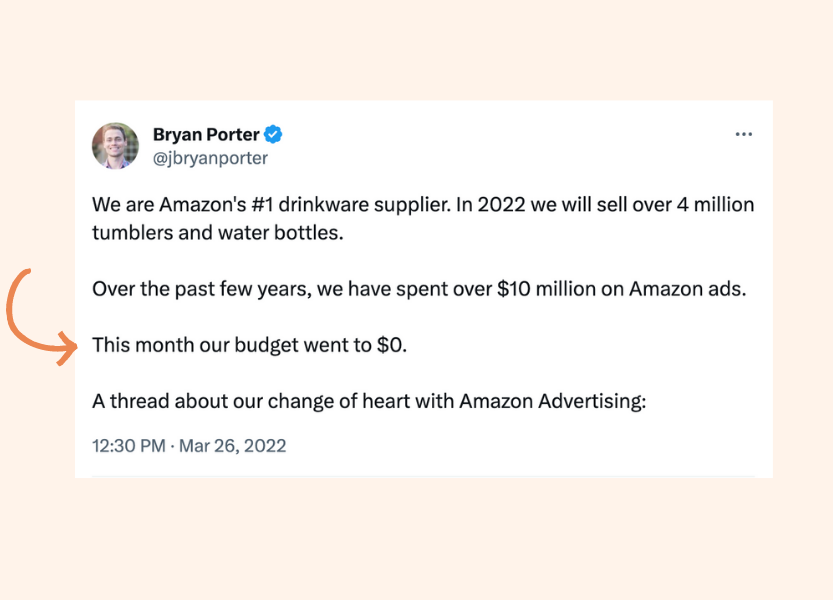
The co-founder of Simple Modern, Bryan Porter, had a change of heart with their Amazon ad spend in 2022. Despite being Amazon’s top drinkware supplier and investing over $10 million on Amazon ads since 2016, they reduced their budget to $0.
Some points to ponder first:
- Simple Modern has strong brand recognition
- They offer competitive pricing through a low-markup model
- They only sell in the first-party (1P) marketplace on Amazon
One ECF member agreed with Porter’s approach: “I’d rather have a smaller, reliably profitable business than a big one hooked on volume like a drug addict. It’s short-term pain, but I have to get off this never-ending ad-inflation treadmill before it kills us.”
But everything comes with context. After 6 months, Simple Modern tested their assumptions with another million in ad spend, revealing their new strategy:
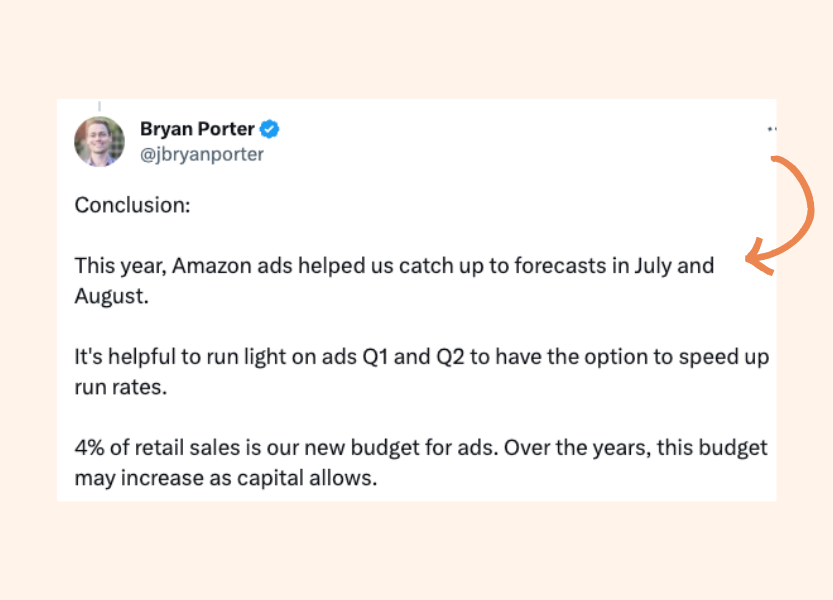
So before you decide to scale back ad spending or switch them off completely, look at what you can optimize and test.
One ECF member tested various ad metrics to optimize profitability.
“We’ve had mixed results, and it depends on the item and your goal. For one item, we turned off PPC consistently for Friday-Saturday, our profits went up, and our rank has stayed strong. In fact, last week, we sold exactly one less unit in those two days as we did in the same 2-day span the week before, when we sold 110 units with PPC. An extra $850 in our pockets.”
On the other hand, another member said many of their products suddenly dropped in ranking after turning off ads.
Increasing the budget for a successful ad campaign initially led to a reduction in their organic sales and profits. So, after making adjustments to lower it, they achieved a balance where ads boosted profits without cannibalizing organic sales.
“Every product has its equilibrium point; you need to test and measure to see where you end up.” — ECF Member
The member also plans to experiment with reducing ads to 1-2 days a week for high-ranking products.
Takeaway: Not all businesses will benefit from scaling back or completely eliminating their Amazon ad spend. The decision should take into account factors like brand recognition, product pricing strategy, and balance between organic and paid sales.
Ultimately, experimentation and careful analysis of the results appear to be key in determining the most effective strategy.

Advertising on Amazon can be a double-edged sword. Over-reliance on paid advertising can create a situation where a substantial portion of sales is driven by ads, which can be risky if ad costs rise or if the effectiveness of ads decreases.
“In general, what Amazon has figured out with sponsored ads is that it is an extremely effective way for sellers to self-select the maximum amount of margin that they are willing to give up to make the sale.” — ECF Member
Take note:
- You should never spend more on PPC than what Amazon is paying you. If that is the case, PPC isn’t the problem…you need to look at what listing optimizations you can make to increase conversion rates.
- Don’t look solely at advertising cost of sales (ACOS) — look at total advertising cost of sales (TACOS). TACOS shows you a much better picture of how your overall advertising is doing. TACOS shows how much advertising is affecting your organic sales. But there is a correlation that the more you spend on PPC, the more organic sales you’ll get as well. And the TACOS gives you that snapshot.
- Aim for 15-20% TACOS. It shows if you’re overspending or underspending. If you have less than 15%, you have more room to work on PPC optimization. If you are at 25-30%, you should work on some Amazon SEO ranking strategies.
One ECF Member noted a sudden slump in their leading product’s Amazon performance. They spent six months implementing various strategies to try and compete. Then, a bombshell dropped.
Through anonymized advertising data obtained from an Amazon representative, they discovered a heavyweight competitor had entered their niche.
“Based on what I’m seeing, I’d be scared to throw ad money at the problem, but I also feel like, if we don’t, we’re just gonna get ground to dust.” —ECF Member
He shared the anonymized ads data comparing their brand to the top four competitors in their niche, asking the ECF forum: “How would you react to the data below? What would you do?”
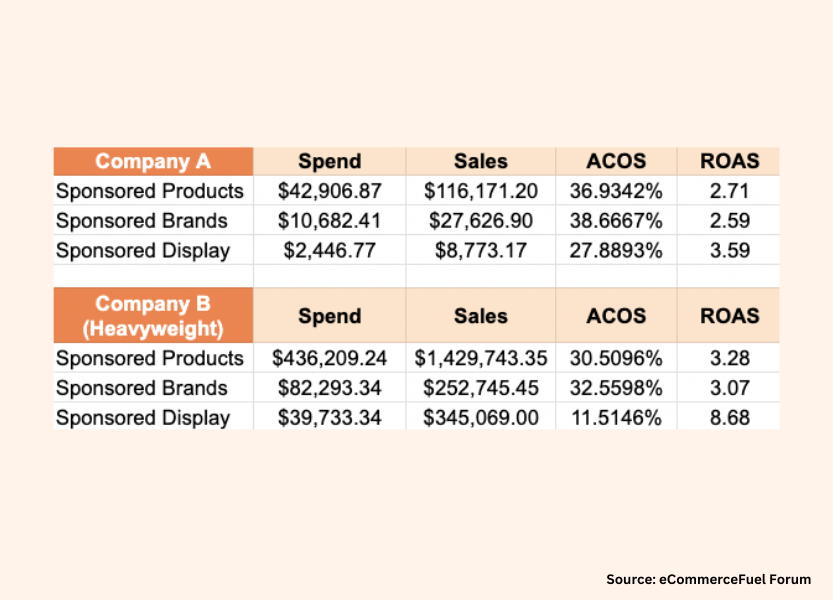
And the fine folk of ECF weighed in, revealing a number of things he could control:
- Advertising Strategy: Consider building sponsored ads that target competing products. This strategy can help to make sponsored products ads ride on their traffic coattails and make potential customers aware of the product when they are on the competitor’s page.
“Conversion and ad management work hand in hand. So work on conversion rate optimization on those ASINs or continue to, and study what those competing products are doing and make sure you are doing all those things at least as well or better.” —ECF Member
- Pricing Strategy: Consider raising the product price to compete on ad spend. A higher price could help absorb the increased advertising costs while adding a perception of premium quality to the product.
“It might be time to consider raising your price so you can return to competing on the spend. I did this with some products, and it was a real game changer.” —ECF Member
- Value Proposition: Highlight the business’s unique selling points and strengths, especially in areas where competitors fall short. For example, enhance customer service, provide easy returns, offer a lifetime warranty, or emphasize on being a US-based company.
- Post-Purchase Engagement: Consider post-purchase selling strategies, such as product inserts, to enhance customer experience and build brand loyalty.
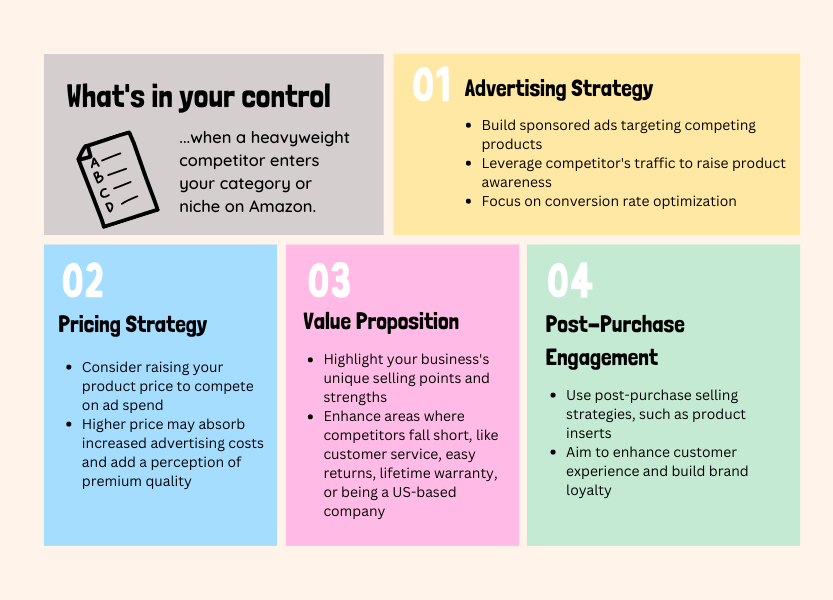
Final Thoughts: Amazon Advertising Is Like Having a Mortgage
Despite the challenges of time investment, cost, and rising competition, you have a lot to gain by advertising on Amazon. You can significantly improve your product visibility, amplify sales velocity, effectively improve your organic ranking, and strategically outpace your competitors.
This analogy sums it up well…
“I used to say that PPC is the new rent. However, I think it’s more akin to being the new mortgage. You have to own that property (PPC) to even live in the neighborhood (AMZ).” —ECF Member
This suggests a shift in perception. Just like a mortgage implies ownership of a property rather than simply paying for its use, investing in Amazon advertising is seen as a way of establishing a more permanent and significant presence on Amazon.
It’s not just a fee to pay but an investment that can yield substantial returns over time.
Want access to 3,000+ discussions of Amazon-related advice?
There’s enough general advice out there relating to how to approach Amazon ads. Wouldn’t you prefer having others weigh in on your specific questions and situation? You’ll find it in the ECF community. You can learn more about the community or apply to join today.
- SEO Powered Content & PR Distribution. Get Amplified Today.
- PlatoData.Network Vertical Generative Ai. Empower Yourself. Access Here.
- PlatoAiStream. Web3 Intelligence. Knowledge Amplified. Access Here.
- PlatoESG. Automotive / EVs, Carbon, CleanTech, Energy, Environment, Solar, Waste Management. Access Here.
- BlockOffsets. Modernizing Environmental Offset Ownership. Access Here.
- Source: https://www.ecommercefuel.com/amazon-sponsored-ads/?utm_source=rss&utm_medium=rss&utm_campaign=amazon-sponsored-ads




